Eggs, often touted as nature’s perfect food, occupy a significant place in global culinary traditions. Their versatility in the kitchen is unparalleled; from quick weekday breakfasts to intricate holiday dinners, eggs can effortlessly transform into a myriad of dishes, each catering to distinct palates and dietary preferences. An egg can be boiled, scrambled, baked, poached, or fried, and each technique brings out different textures and flavors, showcasing eggs’ adaptability.
Beyond their culinary flexibility, eggs are powerhouses of nutrition. They are an excellent source of high-quality protein, containing all nine essential amino acids required by the human body. Additionally, eggs are rich in vitamins and minerals such as vitamin B12, riboflavin, and selenium, which are crucial for various bodily functions. The presence of choline, often found in egg yolks, is vital for brain health and development.
In many cultures, eggs symbolize new beginnings and are integral to celebratory feasts and rituals. From the ubiquitous omelet to the sophisticated Eggs Benedict, eggs have found their way into traditional and modern recipes alike. Their ability to blend with diverse ingredients and enhance the flavors of savory and sweet dishes makes them an indispensable component of global cuisines.
What makes eggs even more appealing is their affordability and accessibility. Whether you shop at a local farmer’s market or a supermarket, eggs are generally easy to find and economically priced, making them a staple ingredient in many households. This combination of nutrient density, culinary flexibility, and economic value cements eggs as a popular choice in kitchens around the world.
As we delve into these ten delicious and easy egg recipes, you will discover new ways to appreciate and enjoy this humble yet extraordinary ingredient. Each recipe promises to be a delightful journey into the wonderful world of eggs, showcasing just how diverse and delightful egg-based dishes can be.“““html
Classic Scrambled Eggs
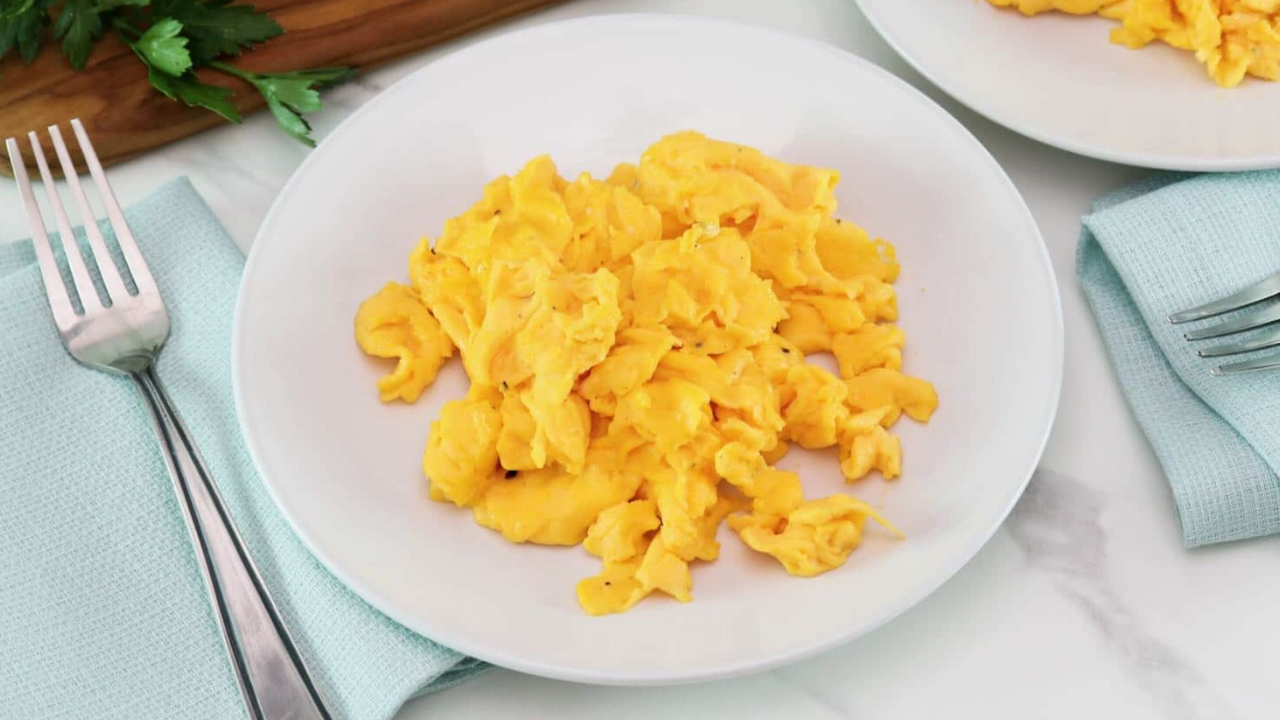
Scrambled eggs are a breakfast staple, cherished for their simplicity and delightful flavor. To achieve light and fluffy scrambled eggs, begin with fresh eggs and ensure that you whisk them thoroughly before cooking. Use a ratio of two tablespoons of milk or cream per two eggs to attain a rich and creamy texture. Adding a pinch of salt and a light sprinkling of pepper at this stage will help to season the eggs evenly.
Heat a non-stick skillet over medium-low heat and add a pat of butter or a small amount of olive oil. Once the butter has melted and begun to bubble, pour in the whisked eggs. Stir the eggs gently and continuously with a spatula, making sure to bring the cooked portions from the edges into the center. This method prevents the eggs from cooking too quickly and becoming dry. Continue to stir until the eggs are mostly set but still slightly runny; they will continue to cook off the heat.
For those looking to elevate their scrambled eggs, incorporating additional ingredients can bring new dimensions of flavor and texture. Grated cheese, such as cheddar or feta, can be stirred into the eggs during the last moments of cooking. Fresh herbs like chives, parsley, or dill offer a burst of freshness and color, while diced vegetables such as bell peppers, tomatoes, and spinach contribute nutritional benefits and a satisfying crunch.
To create a more indulgent version, consider folding in pieces of smoked salmon or cooked bacon. These protein additions provide a savory depth that pairs exceptionally well with the creamy scrambled eggs. Regardless of the variations you choose, the key to perfect scrambled eggs lies in gentle cooking and attentive stirring. This technique ensures your scrambled eggs remain tender and moist, making for a consistently delicious breakfast experience.“`
Eggs Benedict

Eggs Benedict stands as the quintessential brunch dish, epitomizing sophistication with its delicate structure and rich flavors. This culinary masterpiece, originating from New York in the late 19th century, remains a beloved classic today. To start, the base of the dish is the English muffin, split open and lightly toasted to achieve a perfect crunch. Atop this, place a slice of Canadian bacon, which has been warmed in a skillet to a golden brown perfection.
The pivotal challenge in crafting Eggs Benedict is achieving the ideal poached egg. Begin by bringing a pot of water to a gentle simmer, adding a splash of vinegar to help the egg whites coagulate swiftly. Crack each egg into a small bowl or ramekin first, then gently slide it into the simmering water. With the aid of a slotted spoon, nudge the white around the yolk to maintain its cohesive shape. Allow the eggs to poach for approximately 3 to 4 minutes, ensuring the whites are set while the yolks remain luxuriously runny. Carefully lift them out with the slotted spoon, blot off excess water, and delicately position them atop the Canadian bacon.
Next comes the crowning jewel: hollandaise sauce. This creamy, velvety emulsion is crafted from egg yolks, clarified butter, and a hint of lemon juice. To prepare, whisk together the egg yolks and lemon juice in a heatproof bowl over simmering water, then gradually incorporate the melted butter until the mixture thickens and becomes smooth. Season with a pinch of salt and a dash of cayenne or black pepper for an added kick.
Once all components are assembled, generously drizzle the hollandaise over the poached eggs and garnish with chopped chives or paprika for a vibrant contrast. For those seeking variety, consider substituting Canadian bacon with smoked salmon for a luxurious twist, or add a layer of creamy avocado for a refreshing alternative. Regardless of the chosen variation, Eggs Benedict promises an indulgent and satisfying experience for any brunch enthusiast.“`html
Omelette Variations

Omelettes are a staple in many kitchens due to their versatility and ease of preparation. To start with a basic omelette, whisk together two to three eggs in a bowl until the yolks and whites are fully combined. Season with a pinch of salt and pepper. Heat a non-stick skillet over medium heat and add a small pat of butter or a splash of oil. Once heated, pour in your egg mixture, tilting the pan to ensure an even spread.
As the eggs begin to set, gently lift the edges using a spatula, allowing any uncooked egg to flow underneath. When the omelette starts to firm up but still remains slightly runny on top, it’s time to add your fillings. Popular choices include shredded cheese, diced ham, sautéed mushrooms, and fresh spinach. These ingredients not only enhance flavor but also add nutritional value to your omelette.
Once your fillings are added, carefully fold one half of the omelette over the other. This will create a crescent shape. Continue to cook for another minute or until the cheese is melted and the inside is fully cooked to your liking. If the top still appears too undercooked, you can briefly cover the skillet with a lid to trap heat and ensure thorough cooking without burning the bottom.
Achieving the perfect consistency for an omelette is a matter of both technique and timing. Key tips include whisking the eggs well to incorporate air, using a well-seasoned or non-stick skillet to prevent sticking, and controlling the cooking temperature to avoid overcooking and browning.
Experimenting with different fillings can lead to delightful variations that cater to different taste preferences. Whether a classic combination of cheese and ham or a more adventurous mix of mushrooms and spinach, there is an omelette variation for everyone. Enjoy the process and savor the delightful outcomes of your culinary creativity.“`
Shakshuka
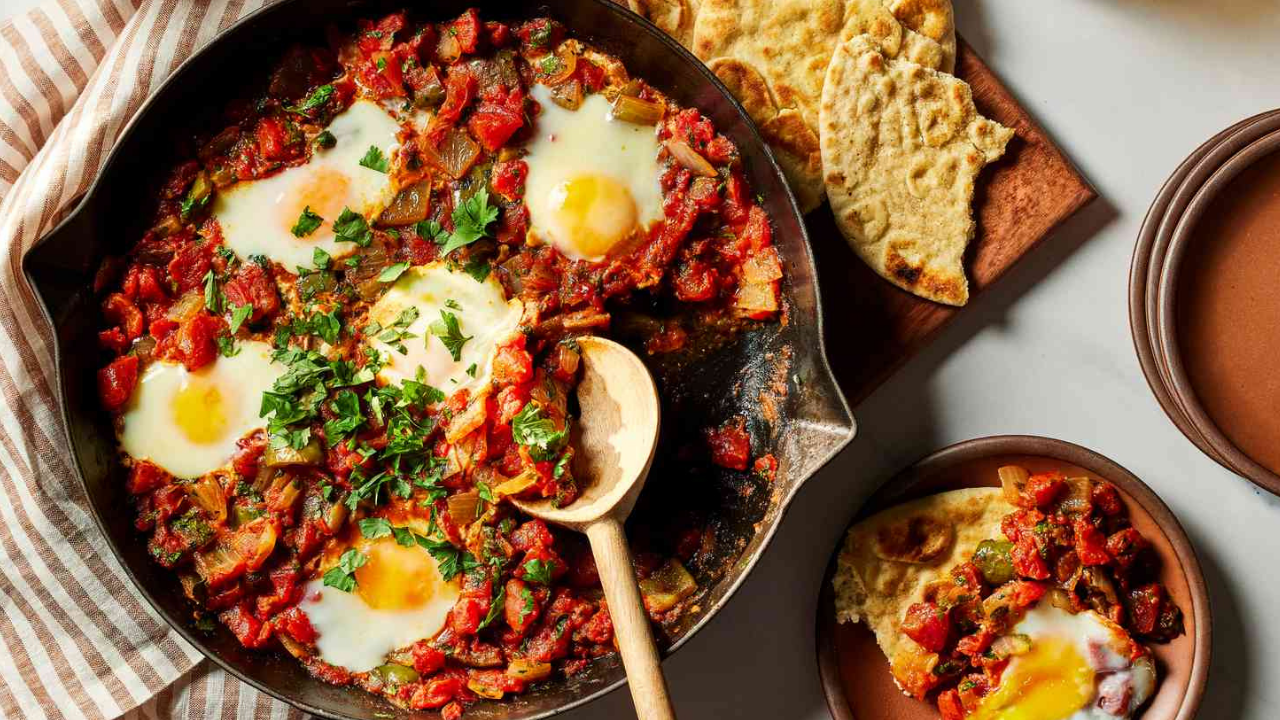
Shakshuka, a staple in Middle Eastern cuisine, is a vibrant and hearty dish that brings together poached eggs and a spicy tomato sauce for an unforgettable culinary experience. Its origins are traced back to the Maghreb region, encompassing countries such as Tunisia, Algeria, and Morocco, before it gained widespread acclaim in Israel and other parts of the Middle East. The dish’s name “Shakshuka” means “a mixture” in Arabic, aptly reflecting its medley of robust flavors.
To prepare Shakshuka, you will need a few essential ingredients: tomatoes, bell peppers, onions, garlic, and a combination of spices that typically include cumin, paprika, and cayenne pepper. Olive oil, salt, and pepper are also crucial for seasoning. Fresh herbs like cilantro or parsley can be used for garnishing. While the traditional recipe calls for red bell peppers, variations with different types of peppers such as green or yellow can impart unique flavor nuances.
The cooking process begins with sautéing the onions and bell peppers in olive oil until they are soft and fragrant. Garlic is then added, followed by the ground spices which should be allowed to bloom to release their full essence. Chopped tomatoes are incorporated next; some recipes might call for the addition of canned tomatoes to enhance the sauce’s richness. This mix is simmered until thickened, creating an aromatic base for the eggs.
To poach the eggs directly in the sauce, make small wells in the tomato mixture and crack an egg into each one. Cover the pan and cook on low heat until the eggs reach your desired level of doneness – some prefer their yolks runny, while others might opt for them to be fully set.
For those seeking to elevate their Shakshuka, toppings such as crumbled feta cheese can add a delightful creaminess. Other variations might include additional vegetables like spinach or eggplant, or the use of different spices like za’atar or harissa for extra depth and heat. This versatile and comforting dish can be enjoyed any time of the day, making it a beloved choice for a flavorful and satisfying meal.
Deviled Eggs

Deviled eggs are a classic appetizer that seamlessly blends simplicity with delightful flavor. To start, you’ll need to prepare the hard-boiled eggs. Place the eggs in a single layer in a saucepan and cover them with an inch of water. Bring the water to a rolling boil over high heat, then cover the saucepan and turn off the heat. Let the eggs sit in the hot water for about 12 minutes. Afterwards, drain the hot water and submerge the eggs in ice water to cool them quickly, making them easier to peel.
Once peeled, slice each egg in half lengthwise and carefully scoop out the yolks. In a mixing bowl, mash the yolks thoroughly with a fork. The creamy filling is vital to perfecting deviled eggs. Combine the mashed yolks with mayonnaise and a dash of mustard to create a smooth texture and tangy flavor. Season the mixture with salt, pepper, and a pinch of paprika for a hint of spice. Spoon or pipe the filling back into the egg whites, ensuring each bite is generously filled.
Garnishing your deviled eggs can be as creative as your imagination allows. For a classic touch, simply sprinkle a bit of paprika on top. For an added layer of flavor, consider placing a small slice of jalapeño or a sprinkling of chili flakes for a spicy kick. Alternatively, crumbled bacon can be added atop each egg for a savory crunch. Fresh chives or parsley also make a vibrant garnish, enhancing both presentation and taste.
Variations on traditional deviled eggs offer endless possibilities. Sriracha or hot sauce can be mixed into the yolk filling for those who enjoy a bolder heat. Avocado can replace part of the mayonnaise for a healthier twist and a creamy, rich taste. Experimenting with different fillings and toppings means you’ll never tire of this versatile and popular appetizer.
Quiche Lorraine
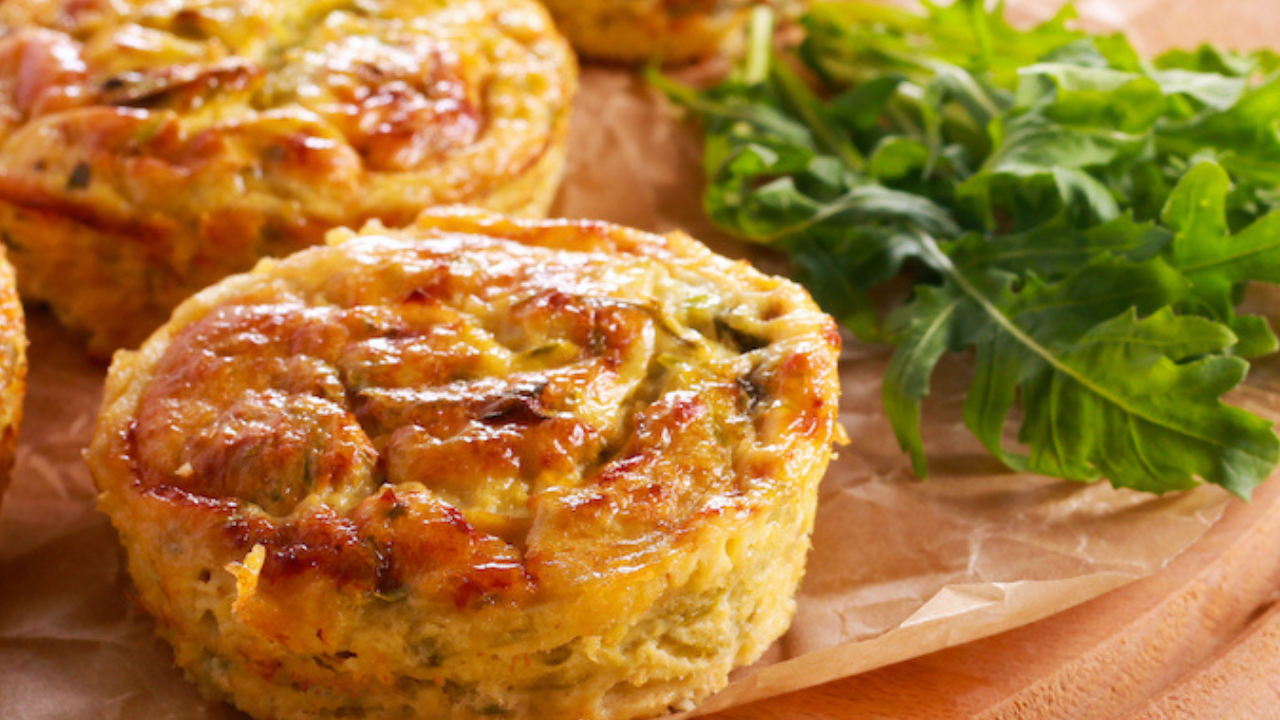
Quiche Lorraine is a quintessential French dish that combines a buttery crust with a rich and creamy filling. The traditional recipe features a delectable blend of eggs, cream, cheese, and bacon, creating a savory pie that’s perfect for breakfast, brunch, or even a light dinner. To begin, you need to prepare the crust. For a truly flaky and buttery base, use chilled butter and cold water as you combine it with flour and a pinch of salt. Once the dough is mixed, roll it into a disc, wrap it in plastic, and refrigerate for at least 30 minutes.
As the crust chills, preheat your oven to 375°F (190°C). This ensures the oven reaches the desired temperature by the time your quiche is ready to bake. Roll out the dough on a floured surface and fit it into a tart pan, trimming any excess dough. To prevent bubbles, use a fork to prick the base of the crust. Partial baking the crust, or blind baking, is recommended; cover the crust with parchment paper, fill it with baking beans or pie weights, and bake for 15 minutes. Remove the weights and bake for an additional five minutes until it’s lightly golden.
For the filling, whisk together six eggs and a cup of heavy cream until well combined. Stir in two cups of shredded Gruyere cheese and the crispy, cooked bacon pieces. Season with salt, pepper, and a pinch of nutmeg for an aromatic touch. Pour the filling into the partially baked crust and return it to the oven. Bake for 25-30 minutes, or until the quiche is set and lightly browned on top.
This classic Quiche Lorraine can be easily customized. For a vegetarian version, skip the bacon and add sautéed vegetables like spinach, mushrooms, or zucchini. For a simpler cheese-only quiche, use a blend of your favorite cheeses such as cheddar, feta, and gouda. Each variant allows you to enjoy a different yet equally delightful quiche. Serve warm or at room temperature, paired with a fresh salad or a cup of soup for a more substantial meal.
Frittata
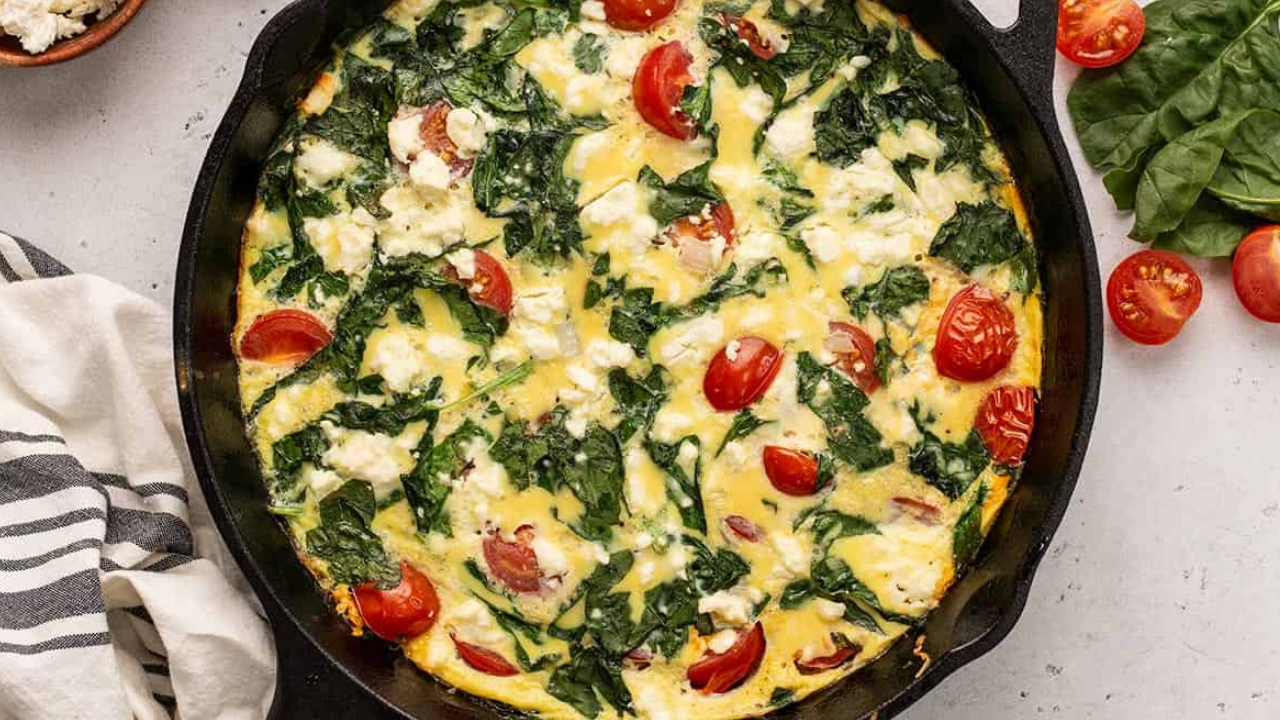
The frittata is a versatile and flavorful Italian-style omelette, embodying simplicity and elegance. Unlike a traditional omelette, a frittata can be enjoyed both hot and cold, making it a convenient dish for any meal or occasion. The foundation of a frittata lies in its ingredients, which can range from meats and cheeses to a variety of vegetables, allowing for endless creativity in the kitchen.
To create a frittata, begin by selecting fresh, high-quality ingredients. Popular meats to include are bacon, ham, or sausage, which should be pre-cooked before adding to the mix. Cheeses such as feta, mozzarella, or cheddar lend a rich and creamy texture, enhancing the overall flavor profile. Vegetables like bell peppers, spinach, mushrooms, and onions bring freshness and an added layer of taste.
The cooking process of a frittata starts with whisking a suitable amount of eggs—typically six to eight for a medium-sized frittata. Season the eggs with salt, pepper, and herbs like thyme, basil, or parsley for added aroma and taste. In a well-seasoned, oven-safe skillet, heat a small amount of oil or butter over medium heat. Add the pre-cooked meats and vegetables, cooking them until they are tender.
Once the ingredients have melded together, pour the beaten eggs evenly over the mixture. As the eggs start to set along the edges, gently lift them with a spatula, allowing the uncooked eggs to flow underneath. This technique ensures even cooking throughout. Sprinkle the chosen cheese over the top and continue cooking until the frittata is nearly set.
To finish, transfer the skillet to a preheated oven set to broil, allowing the top to become golden brown and fully cooked. This step typically takes about two to three minutes but should be monitored closely to prevent overcooking. Once ready, remove from the oven and let it cool slightly before slicing.
Frittata flavor combinations are endless, making it easy to cater to various tastes. A classic combination includes spinach and feta, while a more adventurous mix might feature chorizo and roasted red peppers. Serve the frittata with a side salad or crusty bread for a well-rounded meal, or cut into small squares for an appetizing addition to a brunch spread.“`html
Korean Rolled Omelet (Gyeran Mari)

Gyeran Mari, a staple in Korean cuisine, is a versatile and visually appealing egg dish that is not only delicious but also relatively straightforward to prepare. This Korean rolled omelet serves as an excellent side dish or a tasty addition to lunch boxes. The beauty of Gyeran Mari lies in its simplicity and the ability to customize it with various fillings.
To start, you will need 4 large eggs, a pinch of salt, and finely chopped vegetables such as carrots, green onions, and bell peppers. Begin by cracking the eggs into a mixing bowl and whisking them thoroughly with the salt. Once the eggs are well-beaten, add in the chopped vegetables and mix to combine.
Heat a non-stick pan over medium-low heat and lightly coat it with oil. Then, pour a thin layer of the egg mixture into the pan, making sure it spreads evenly. As the eggs start to set but are still slightly runny, carefully roll the omelet from one end using a spatula. Continue to roll until you reach the other end of the pan, and then push the rolled omelet back to the starting edge. Pour more of the egg mixture into the pan and repeat the process, rolling the omelet over itself until all the egg mixture is used up.
For variations, consider adding finely chopped ham, seaweed sheets, or even cheese to the egg mixture for additional flavor and texture. Achieving the perfect Gyeran Mari roll requires practice, but with patience and the right technique, you will master this delightful dish in no time. When done, let the rolled omelet cool slightly before slicing it into bite-sized pieces.
Enjoy your homemade Gyeran Mari as a side dish or make it the star of your meal. Its vibrant colors and savory taste will surely impress your family and guests.“`
The Endless Possibilities with Eggs
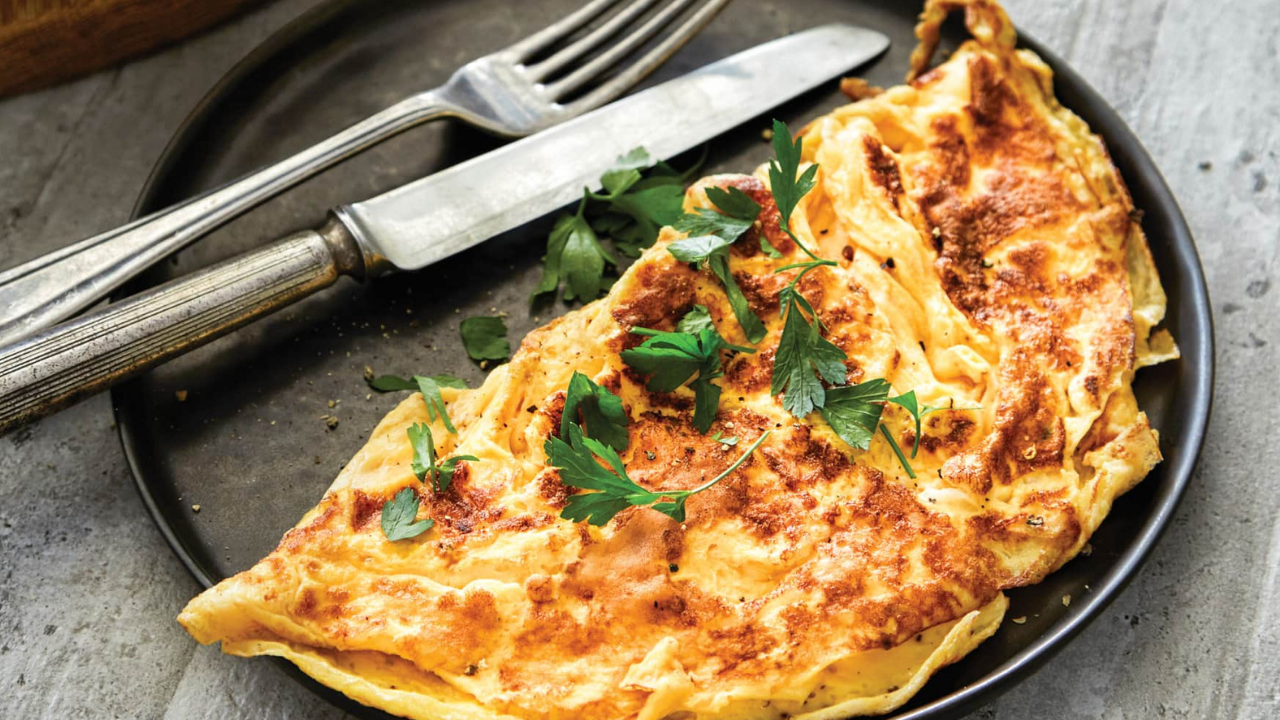
Eggs stand out as one of the most versatile and accessible ingredients in any kitchen. Their simplicity does not detract from their culinary potential. Whether you’re crafting an exquisite brunch dish or a quick, nutritious dinner, eggs can easily adapt to a wide range of flavors and cuisines. From the classic scrambled eggs to more sophisticated creations like soufflés, the array of options is virtually limitless. This collection of 10 egg recipes illustrates just a fraction of what can be achieved with this humble ingredient.
The flexibility of eggs extends beyond meal types. They effortlessly blend into various cuisine styles, absorbing and enhancing the tastes of accompanying ingredients. Eggs pair perfectly with vegetables, meats, cheeses, and even some fruits, enabling cooks to experiment confidently. They can be the star of the dish, as in a frittata or a quiche, or a subtle binding agent, seamlessly blending flavors in a dish like a casserole or a stir-fry.
However, ensuring the best outcomes from your egg recipes involves some practical considerations. Storing eggs properly is crucial. Ideally, they should be kept in the refrigerator at a consistent temperature. Before using them, make sure to check for any cracks and discard any eggs that show signs of damage. Proper handling not only maintains their quality but also helps to prevent foodborne illnesses.
In conclusion, the culinary versatility of eggs makes them an invaluable asset in any kitchen. Their ability to adapt to different cooking methods and ingredients opens up a myriad of possibilities for both novice cooks and seasoned chefs. By following safe handling practices, you can enjoy their benefits while maintaining food safety. So, grab some eggs and let your culinary imagination run wild. With eggs, the potential for creativity is truly boundless.
Conclusion
Eggs are one of the most versatile ingredients in the kitchen, offering endless possibilities for delicious meals. From classic breakfast dishes like scrambled eggs and omelets to creative lunches and dinners such as frittatas and quiches, eggs can be incorporated into a wide variety of recipes that cater to all tastes.
If you have any questions or concerns about our Article, please reach out to our support team. We’re here to help you!








Thank you for sharing excellent informations. Your site is so cool. I’m impressed by the details that you have on this blog. It reveals how nicely you understand this subject. Bookmarked this website page, will come back for extra articles. You, my pal, ROCK! I found just the information I already searched all over the place and simply couldn’t come across. What a perfect site.
I’d have to examine with you here. Which is not something I normally do! I get pleasure from reading a put up that will make folks think. Also, thanks for allowing me to comment!
This web site is my breathing in, very great style and design and perfect written content.
I appreciate, cause I found just what I was looking for. You’ve ended my 4 day long hunt! God Bless you man. Have a great day. Bye
I’m really enjoying the theme/design of your weblog. Do you ever run into any web browser compatibility problems? A handful of my blog audience have complained about my blog not operating correctly in Explorer but looks great in Firefox. Do you have any recommendations to help fix this issue?